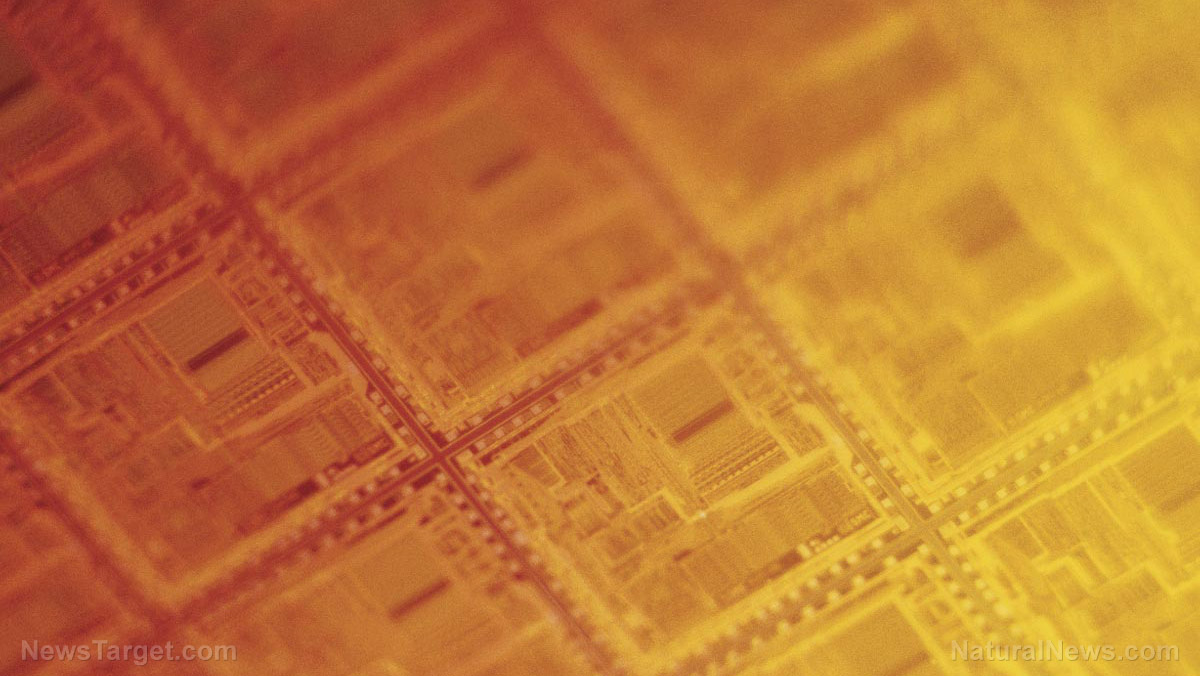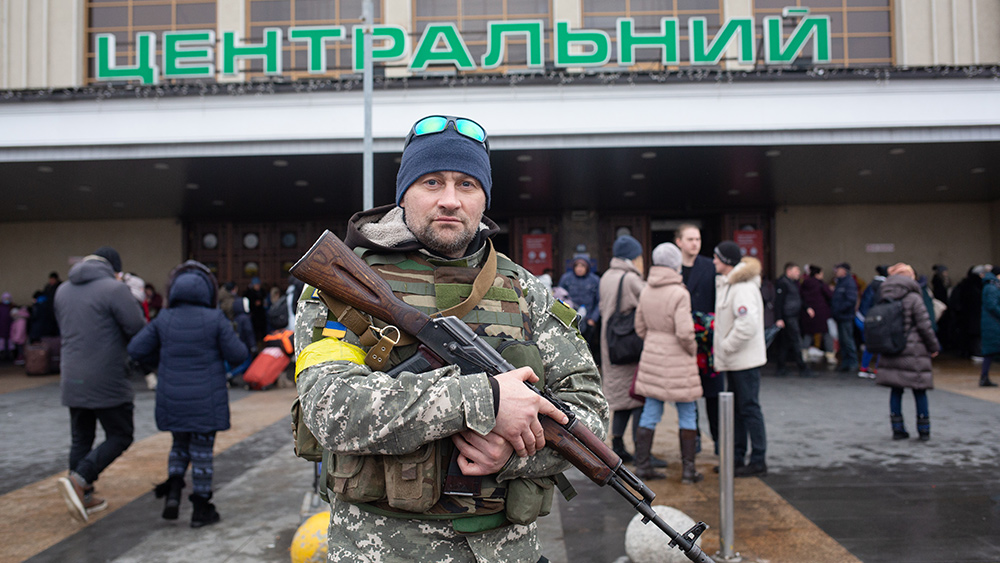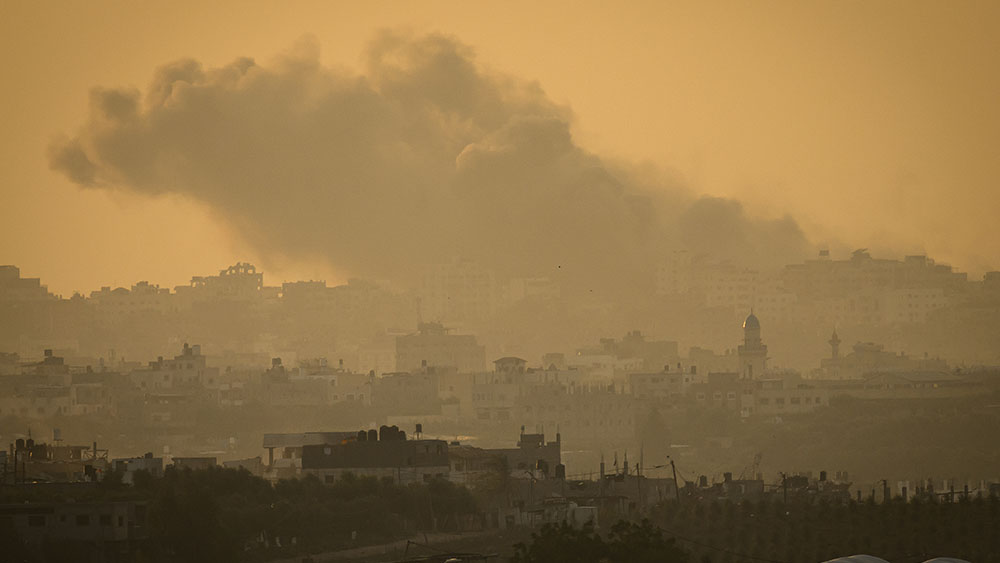Taiwan earthquake puts global chip supply at risk as TSMC pauses production line
04/05/2024 / By Ethan Huff

The massive earthquake that struck Taiwan’s eastern coastline this week, rocking the entire island, resulted in a temporary shutdown of the Taiwan Semiconductor Manufacturing Co. (TSMC), which manufactures chips for the entire world.
Reports indicate that the manufacturing plant, a vital component of the global supply chain for microchips, closed its production line after shaking from the earthquake rattled the facility.
The largest to hit Taiwan in 25 years, the quake destroyed many buildings and killed many people. It also threw a wrench into TSMC’s operations, the company being the main contract chipmaker for both Apple Inc. and Nvidia Corp.
(Related: Did you know that the entire U.S. stock market is being artificially propped up, mainly by Nvidia?)
“There is no damage to our critical tools including all of our extreme ultraviolet lithography tools,” the company announced in a statement after evacuating its staff out of certain areas of the manufacturing complex.
TSMC did reveal that some of its tools were damaged at certain facilities, but that all available resources are being deployed to ensure a full and swift recovery of operations.
Smaller Taiwanese chipmakers similarly halt production
Rival chipmaker United Microelectronic Corp. also shut down its machinery at some plants and evacuated certain facilities, including at hubs in Hsinchu and Tainan.
Another company whose operations were halted by the earthquake is ASE Technology Holding Co., which manufactures and assembles the vast majority of semiconductors that go into devices like iPhones and other smartphones and consumer vehicles.
The facilities where microchips are made are extremely vulnerable, even to the slightest tremors. Perhaps they should have considered this before planting themselves on an island, Taiwan, that is prone to earthquakes and that sits smack-dab on the infamous Pacific Ring of Fire.
“A single vibration can destroy entire batches of the precision-made semiconductors,” reported Bloomberg. “TSMC’s U.S.-traded shares were up 1.6% Wednesday morning in New York while UMC was little changed.”
An assessment from analysts at Bloomberg Intelligence found that any of the financial effects caused by the earthquake will be “cushioned” by “robust demand for the firm’s advanced node processes” – in other words, there is expected to be limited impact from the quake, or so they say.
Numerous tech firms in Taiwan are still in the process of assessing the damage caused by the quake, which we know leveled dozens of large buildings on the eastern side of the territory.
Barclays analysts noted that even a temporary halt in chip production threatens to upset an intricately complicated production process that in many cases requires uninterrupted seclusion in a vacuum for many weeks.
“Some of the high-end chips need 24/7 seamless operations in a vacuum state for a few weeks,” commented analysts Bum Ki Son and Brian Tan. “Operation halts in Taiwan’s northern industrial areas could mean some high-end chips in production may be spoiled.”
Amazingly, the 7.4 magnitude quake shook most of Taiwan to some noticeable degree, including the capital city of Taipei all the way on the western side of the territory.
Taiwan is a terrible place for delicate chip production, it turns out, as the territory sits at the convergence of two tectonic plates. Even so, Taiwan remains the top location where upwards of 90 percent of the world’s highest-end chips required for advanced applications such as smartphones and AI (artificial intelligence) are made.
“Industry executives and government officials have long called out the dangers of centering the world’s advanced semiconductor production on an island that, apart from natural shocks, is considered a potential military flashpoint,” Bloomberg reported.
More related news about the coming collapse of the global economy as we currently know it can be found at Collapse.news.
Sources for this article include:
Submit a correction >>
Tagged Under:
CHIP, Collapse, computers, crypto, cryptocurrency, disaster, earthquake, Glitch, information technology, microchip, NVIDIA, supply chain, Taiwan, TSMC
This article may contain statements that reflect the opinion of the author
RECENT NEWS & ARTICLES
COPYRIGHT © 2017 NATIONAL SECURITY NEWS



















